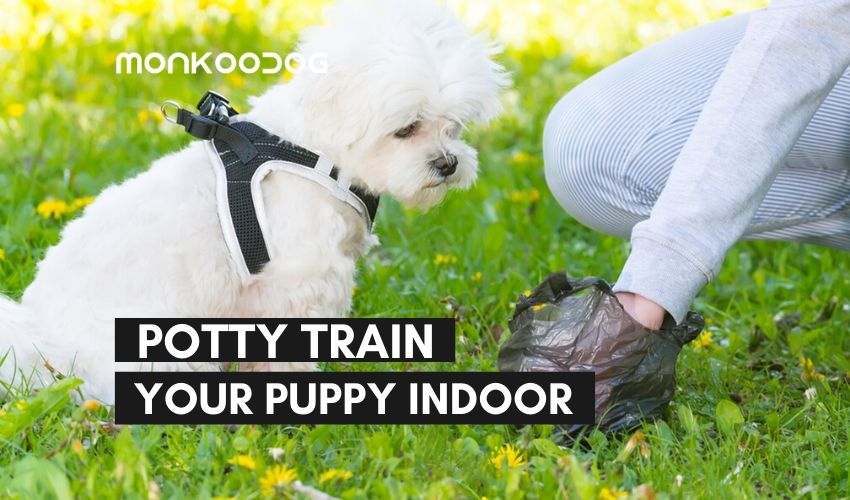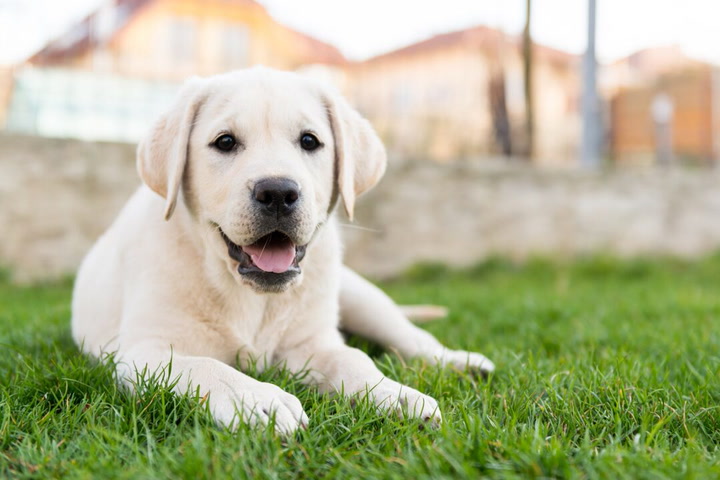
Potty training is the biggest challenge that dog owners face, every time they welcome a new dog member to their families. Of course, those who keep their dog outdoors will find it relatively easier but if your dog is going to live indoors, then your biggest nightmare, no doubt, is dreading each step to avoid stepping on your dog’s pee or poop.
And not just that, you will have to make sure that your fancy carpets, mats, and couches are safe from the dog!
We do understand and agree that this situation is difficult and so here are a few tips to potty train your dog indoors.
When should you start training?
It is generally agreed that habits that you develop early in life stick throughout. The same goes for dogs as well. The best time to start house training is between two to three months of age. House training is a lengthy process and it might take up to 5 months for a pup to get properly trained. You must also be aware that sudden setbacks are common and it is crucial that you rectify it instantly.
Smaller dogs will need to pee often as their bladders are small while bigger dogs can hold it in for a longer time. Potty times will also depend on what you feed your dog, how much water he drinks, and his physical activities. So a schedule that is perfect for one dog will not work for another. You need to supervise your dog, understand his needs, and schedule his potty breaks accordingly.
It has also been observed that in case there is a dog already in the house, the new dog is more likely to mimic the same behavior. So when the old dog uses a particular spot to relieve himself, the new dog will follow.
If your dog is older than 3 months, then it will be more challenging and takes longer to train. This is because reshaping or modifying behavior is harder than introducing one.

A dog porch potty in the house. Image from Imgur.com
Create a confinement zone
If your dog has access to the entire house, then it is likely for your dog to pee anywhere. So the first thing you need to do is restrict his area of movement.
The ideal way to set up this zone would be in the laundry room or a bathroom as it is easier to clean as well as restrict. You can also use fences or baby doors to mark your dog’s territory. Crates are a good option as well but you must make sure it is not too spacious as it might make the dog relieve himself there itself.
Dogs are clean animals and they don’t like dirtying their sleeping spaces. So if you restrict their sleeping space, then they will start holding it in until you take them out.
Pee pads
For house training, you need to use pee pads as the dog’s toilet spot. In case you use a crate for your dog, you can place the pad outside the crate which will make the dog step outside to potty.
Make sure that you leave a small portion of the used pad as well so that through smell, the dog will be prompted to pee there again.
Dogs have a habit of eliminating in places that they have previously used. So in case he eliminates in a wrong spot, make sure you thoroughly clean the area and remove the smell completely. If your cleaning is not proper, then there are chances for him to eliminate in that place again.

Create and maintain a routine
The only way you can successfully house train your dog is if you maintain a regular schedule for the dog’s entire day. Mealtime especially is very important; fix specific times and feed your dog only at that time. Also, avoid being generous with treats or food if it is not meal time as it will make your dog poop multiple times a day.
Once you follow a solid pattern, you will know when to schedule potty breaks and act accordingly.
Condition and reinforce
This part is very important if you want your dog to maintain potty behavior. Positive reinforcement is the best method to shape a dog’s behavior. Every time he pees or poops in the correct space, either on the pee pad or when you take him out, make sure you give a treat. This will influence the dog to repeat the behavior.
Using cue words
You can also use cue words like ‘pee’, ‘potty’ to nudge the dog to relieve himself. Suppose you take him outdoors sometime after his meal, you can use cue words to let him know it’s potty time.
In case he eliminates in the wrong place then tell him ‘No’ in a stern voice and point to the correct space.

Dog on a leash
Indoors to outdoors
Using pee pads alone may not be ideal as you will have to live in a house that smells of dog poop and pee all the time. Pee pads are easy to clean but there isn’t much you can do about the smell.
What you can do is train your dog to eliminate every time he is taken outside. As mentioned earlier, you can take him out 15 – 30 minutes after a meal and guide him to his potty spot. Take him on a leash for a few weeks to the same spot and when you notice that he directs himself there without your help, you can stop using the leash. You must also take him out in the mornings and nights after and before his sleep.
Successful training
In order to make house training success, you need to be patient, observant, and devoted. Consistency is very crucial and if allow any slips, then it might be very hard to get back on track. The more consistent the training is, the lesser time it will take to establish the behavior.
You must always be prepared for accidents inside the house. This might happen when the dog is ill or simply had too much to eat or drink that day. So always have cleaning essentials handy and air fresheners.




